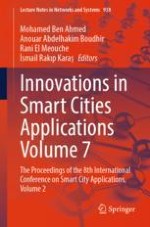2024 | OriginalPaper | Buchkapitel
Towards Digital Twins in Sustainable Construction: Feasibility and Challenges
verfasst von : Mojtaba Eslahi, Elham Farazdaghi, Rani El Meouche
Erschienen in: Innovations in Smart Cities Applications Volume 7
Verlag: Springer Nature Switzerland
Aktivieren Sie unsere intelligente Suche, um passende Fachinhalte oder Patente zu finden.
Wählen Sie Textabschnitte aus um mit Künstlicher Intelligenz passenden Patente zu finden. powered by
Markieren Sie Textabschnitte, um KI-gestützt weitere passende Inhalte zu finden. powered by
